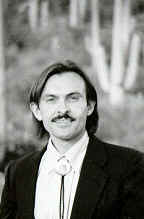Today there were a number of concurrent talks by aboriginal elders about their culture and how they managed voices and people who hear voices. As I said in yesterday's blog, it was so inspiring to have aboriginal people fully integrated into the conference and presenting their successful strategies for voice management.
I tried to make my workshop completely experiential since I had given enough theory in my keynote address. I started with a guided imagery process in which people travel through a portal to the dimension in which their voice resides and in which it has a physical form. I mentioned that all voices must be attached to physical images. No disembodied voices allowed for they are frightening. If a voice has a physical form, we can modify that form to make it look ridiculous if it's being too scary. In one of the Harry Potter movies, students in "Defense against the Dark Arts" learned to turn their worst fears into ridiculous looking versions as the fear came out of a cupboard. The spell word was "Ridiculopathy", or something like that. In the exercise, people were asked to enter into the world where their voice lived in a body and find it. A number of strategies were proposed for how to do that. My favorite is to follow a path through the woods, around a pond, up a ridge, and to see it standing in the middle of a meadow, though there are many more. Then the person asks for the voice to tell its story. Many voices are boringly repetitive. They just keep saying over and over, "You should kill yourself because you're not even worth the air that you breathe," or something similar and equally inane. However, rarely do we get the story from the voice about how it came to be in the person's mind in the first place. We want to know where it came from, where it was born, who were its parents, and all the interesting details of its life. We want to know how it came to the conclusion that led to what it's been saying. We want to know what other beings agree with it. Who are its friends? What coalitions has it formed? We actually want to start a relationship with the voice in which dialogue occurs and change can happen. If the voice is stubborn and refuses to change or even to converse, we have to find other voices to stand up to it. We have to start finding stronger voices to drown out the mean ones.
Following this exercise, each person told their experience to another person so that sharing could take place to an audience. In our work with voices, we are striving for increased narrative competence -- better story telling skills. It's important to have an experience and then to be able to come back and tell a coherent, congruent, understandable story about that experience. Next I asked each pair to let one of its members become the voice so that a dialogue could take place. Like most exercises taken from improvisational theatre techniques, I tell people to just trust their gut impulse and say whatever they are driven to say. Don't worry that you aren't sure what the voice would say. Just say whatever you're moved to say. The conversation lasted 10 minutes or so and then we switched. Finally, one person volunteered for the last exercise. She had three voices and picked three other people from the audience to play her voices and one to play her. She took them outside the room and briefed them on what her voices were. Then we started the "skit". This woman's voices had been gone for 10 years. They were trying to return and were demanding her to let them in again. She was refusing. They promised to show her a good time. They promised to tell her to get naked in front of lots of people. She continued to refuse to let them back into her head. The actors and actresses did an excellent job of portraying the struggle she had been experiencing. Finally we discussed what had been happening in the workshop and ground it into aboriginal thought about extraordinary realities and our capacity to negotiate them. I mentioned the problem with some young people of our day trying to journey in other dimensions without guides. That's why we have elders, I said. Elders and teachers are there to help us navigate extraordinary spaces and to give us the stories to understand what's going on so that we don't get too far away from the ordinary world and not know how to get back. More later.




